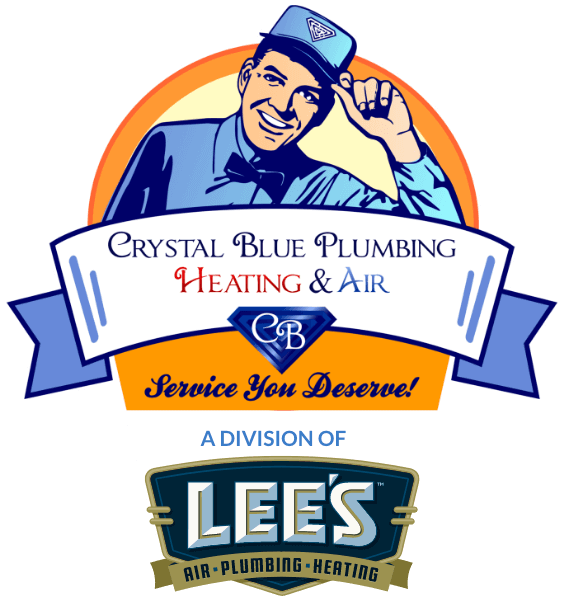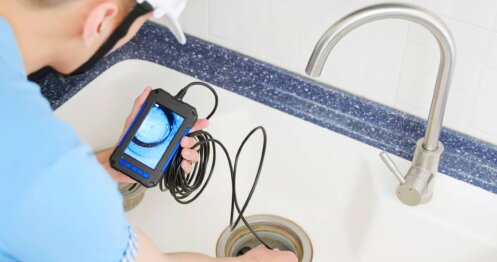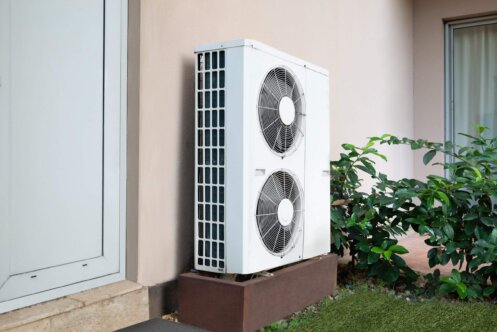Why Video Inspections Are Essential for Commercial Plumbing Systems
Commercial plumbing systems are complicated networks that need ongoing maintenance to perform effectively. Compared to residential plumbing, a commercial system deals with higher volumes of waste, water, and pressure. This higher capacity meets the needs of businesses but also makes them more vulnerable to a variety of potential complications, including pipe degradation, leaks, and blockages. Fortunately, these issues can be monitored and maintained. Regular video inspections help business owners, maintenance personnel, and facility managers proactively identify possible problems before they become disruptive or expensive. This is why they’re an essential part of any comprehensive facility management system and routine.
Understanding Plumbing Video Inspections
Video inspections incorporate high-resolution cameras that are attached to flexible cables. Industry professionals insert these cameras into plumbing lines so that they can see real-time footage. This enables technicians to inspect pipes from the inside and assess their interior conditions without using invasive procedures. Technological advancements now provide detailed diagnostics, high-definition visuals, and recording capabilities useful for further analysis.
The process starts with the insertion of the waterproof camera. A technician introduces this equipment through a proper access point. Real-time monitoring lets the technician use a connected monitor to observe footage. This is their chance to identify warning signs of obstructions, damage, or just wear and tear through a connected monitor or device. Based on their findings, the plumbing technician makes recommendations for cleaning, repairs, or replacements. The collected data is useful for preventive maintenance that should reduce the probability of emergency plumbing failures.
Video inspections that happen on a regular schedule let business leaders and property managers accomplish several things. First, they can maintain optimal rates of drainage and water flow. Second, they can plan strategically for future pipe repairs or replacements. Third, they can ensure the hygiene and safety of the plumbing infrastructure of the property in question. Integrating video inspections into your regular maintenance schedule lets you prevent disruptive and costly plumbing issues and protect your investment and budget.
Common Problems Spotted With Camera Inspections
The plumbing in your commercial establishment is usually out of your visual sight, since it’s inside the walls and under the floors of your business. You can’t immediately see what’s going on, but our inspection camera can. You won’t know what will be found until the actual appointment. However, there are common problems identified during commercial plumbing inspections.
Clogs and Blockages
Depending on the nature of your commercial property and how much foot traffic it has, pipes can suffer different blockages. Grease buildup is a common issue for restaurants, but it’s not restricted to that industry. Debris accumulation can happen to any business, especially if foreign objects get flushed down the available drains. Video inspections identify the location of clogs and assess their severity, enabling effective remediation.
Deterioration and Corrosion
As pipes age, they’re increasingly susceptible to corrosion. The risk of leaks goes up over time, and eventual system failure is a potential problem. Getting a clear view of the interior conditions of the pipes opens the door to proactive replacement planning.
Intrusive Tree Roots
Trees can add a lot of value to a commercial property, both in terms of market value and practical benefits. The trunks, branches, and canopies can provide beauty and shade, but the underground roots can infiltrate pipes and wreak havoc. A video inspection can detect a problem much earlier than you would otherwise notice. Targeted pipe reinforcements and root removal are usually simpler and more economical when the issues are detected early.
Cracks and Leaks
Leaks are always problematic, but it’s practically impossible to deal with hidden leaks that you don’t know about. The potential consequences range from water damage and higher water bills to structural issues and mold growth. Video inspections can identify hidden leaks and pinpoint their locations. Precise repairs become possible with minimal interruption to your business.
Misaligned or Collapsed Pipes
Heavy loads and aging are both potential causes of pipes getting misaligned or even collapsing entirely. In regions known for seismic activity, even minor tremors might shift the ground enough to cause these issues. A video inspection can diagnose these conditions early enough in many cases to prevent serious system failures without disruptive excavations.
The Advantages of Routine Video Inspections for Commercial Plumbing
Video inspections of commercial plumbing have a multitude of benefits. First, problems get detected early. Potential plumbing issues are found before they become major issues. Root intrusions, corrosion, blockages, and cracks can be fixed promptly before they get overly expensive to deal with. Saving significant money on repair costs helps any business budget. Emergency repairs are usually more costly due to materials and labor. Routine inspections can manage these risks by preventing disruptions or at least minimizing them.
Routine maintenance, such as video inspections, helps plumbing infrastructure last longer. Extending the lifespan of your commercial plumbing parts, pipes, and pieces can delay costly replacements.
The secondary costs of plumbing disruptions can be more intangible but also very real. A plumber who discovers a problem early might be able to fix it without shutting down your operations. Serious plumbing emergencies might result in operational downtime, impacting employees, customers, and tenants of commercial facilities. Video inspections can confirm optimal pipe conditions or illustrate what needs to happen to restore system efficiency and effectiveness. Commercial building managers and owners also need to know their wastewater management and plumbing are adhering to health and safety regulations that apply to their properties. Video inspections can identify issues that might result in legal liabilities, fines, or violations.
Some traditional plumbing methods rely on guesswork, but a video inspection gives you precision diagnostics, so you know exactly what’s going on. Based on the information generated, your technician can perform targeted repairs. The amount of pipe replacements, digging, and trial-and-error techniques are minimized.
When you decide to get a video inspection for your commercial property, consider several factors when picking the right plumbing service. Pick a proven service provider with a track record of relevant expertise and experience, specifically in commercial plumbing inspections. Make sure they have advanced technology that utilizes modern diagnostic tools and high-definition cameras. You need someone who can provide comprehensive reporting through detailed reports and visuals. Insured, licensed professionals have the necessary certifications to serve your business well.
Proactive Steps Matter
Regular video inspections can be an essential factor in the maintenance of any commercial plumbing system. Identifying issues proactively is a chance to minimize repair costs while staying compliant with regulations. These inspections are an opportunity for businesses to prevent expensive disruptions and extend the longevity of their current plumbing infrastructure. This investment is a wise strategy and cost-effective move that protects your commercial property from surprise plumbing failures. Take advantage of this to enjoy the peace of mind of knowing your commercial plumbing system is working efficiently and in optimal condition. Whether you’re a business owner or a facility manager, it’s worth making the call to a top commercial services team to schedule your next plumbing video inspection soon.
Crystal Blue Plumbing Heating & Air serves the Sacramento, CA area, providing residents and businesses with plumbing installation, repairs, inspection, and maintenance services. Contact Crystal Blue Plumbing Heating & Air if your business is due for a plumbing inspection.








